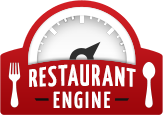How The Craft Beer Industry Is Affecting Restaurants

Craft beer drinkers spend more money than traditional beer drinkers.
Craft beer is one of the hottest, trendiest items for 2015. This burgeoning industry has restaurants flocking to local artisanal brewers to take advantage of what the craft beer world has to offer.
The Brewers Association says in 2014 craft brewers saw an 18% rise in volume and a 22% increase in retail dollar value. Since the total beer market is up only about 0.5%, these numbers are worth noting. The steady growth of craft brewing is keeping the beer industry alive and growing.
Craft brewing points to a profound shift in American beer culture. But, what do these statistics mean for the restaurant owner?
The time is ripe for you to please your customers with craft beer as well as local and artisan brews. The trend is continuously growing, and once introduced into your restaurant, has the potential to drive business up.
We’re going to discuss how the craft beer industry is affecting restaurants. First, let’s talk about the persona of the craft beer drinker. This will shed some light on how you can introduce local and craft beers into your restaurant.
The Craft Beer Drinker Defined
Millennials are driving the craft beer industry. Described generally as people born between the early 1980s and the early 2000s, this group looks for authenticity, flavor and history in the beer they drink. With more than 2,600 craft brewers in the United States and more than 2,500 craft brands sold, Millennials thrive on the variety.
Once thought of as a man’s drink, women stake a large share in the craft beer market. As far as diversity, consumers still skew towards a higher socioeconomic status, but that is slowly changing as the craft beer industry grows.
Of all people, millennials enjoy the variety, taste and ability to experiment with seasonal and local choices. This group knows what they want, and they’re willing to pay for it.
Today’s millennials love the idea of local microbreweries, and in turn they influence their older parents who’ve stepped quite willingly onto the craft beer scene.
Craft Beer Outlined
To understand how your restaurant can benefit from selling craft beer, let’s define it. American craft beer is:
- Small – the brewery distributes no more than six million barrels of beer per year.
- Independent – means that less than 25% of the brewery is owned by a non-craft beer brewery (like Coors).
- Traditional – the majority of the brewery’s output consists of beers whose flavors come from traditional or innovative brewing ingredients and their fermentation.

Women are a part of the diverse group of craft beer drinkers.
Your Restaurant’s Benefits
When you add craft beer to your restaurant’s menu, you’ll likely attract a loyal following. (tweet this) Millennials enjoy supporting businesses that make a difference. Millennials like to feel unique, and drinking locally made, regional craft beer makes them feel better about themselves and their world.
There is a trickle down here, as their friends and family of all ages are starting to appreciate their mantra.
When people drink craft beer, they feel healthier. And, craft beer drinkers are loyal. Once they’ve found their favorite, they will return time and time again to drink it. When it’s on your restaurant’s menu, that means they’re ordering your food, because beer drinkers are often hungry patrons.
Craft beer drinkers like to feel adventurous, and trying new flavors meets their needs. By offering special brews, you’ll entice them into your restaurant. Customers will hop on the band wagon and try your restaurant because it’s paired with their favorite craft beer.
Craft Beer Case Studies
For years, restaurants have crafted their menus around wine. Today, more and more restaurants are shaping their restaurants around craft beer. Let’s take a look at a couple of success stories:
- The Hay Merchant in Houston – According to them, they “are a proud bunch of beer enthusiasts obsessed with serving the very best food and craft beer we can get…” They focused their menu and their concept entirely around their beer program. They use local Texas brewers while their upscale take on bar food pairs unique items like blood sausage queso fundido with the craft beer of the day.
- Bru Handbuilt Ales & Eats in Boulder – This restaurant brings together the art of food and beer. Some of their dishes even use their craft beer like the Wood Roasted Mussels with pickled lemon, citrum IPA broth and cured pork sourdough toast. They even make an IPA tomato sauce!
- Luksus in Brooklyn – The ingenuity of this restaurant includes a prix fixe Scandinavian menu that offers optional beer pairings with each course. It’s a hot spot for craft beer aficionados and foodies alike.
- Monk’s Kettle in San Francisco – Named after the world’s first craft brewers, Belgian Trappist monks, who brewed beer in kettles, this restaurant offers a menu of sustainable and organic food to go along with their list of more than 200 rotating offerings of beer. They pair craft beer and upscale American cuisine.
The Take-Away
According to the latest data, for the first time ever, craft brewers reached double digit (11%) volume share of the marketplace. With craft brewers beating the big beer giants, it’s important to take your share of this vital industry.
America’s interest in food and drink is changing. More and more people are choosing locally crafted beers to complement their food. They are thriving on the adventure of the craft beer as well as the unique taste.
How can you start?
- Offer new or small-batch beers from your local community. Watch what people like and re-stock!
- Match your beer to the season. Summer means a lighter, straw colored beer and the introduction of fruit, herb or citrus flavoring. Winter calls for heavier beers – stout, warm and full-bodied flavors.
- Craft drinkers want more than IPA (India Pale Ale).
- Craft beer drinkers appreciate creativity. Pair your menu offering with local craft beer. Tell your diners what’s good together.
Lastly, studies show that craft beer drinkers spend more money than traditional beer drinkers. (tweet this) According to GuestMetrics, the average guest check that includes food and a mainstream American beer is about $73.00, while a craft beer drinker’s food and beverage check rings in at $86.00.
Bottom line: craft beer drinkers spend more money and are often more loyal customers. So, what are you waiting for?
Are you looking for a great way to introduce craft beer into your restaurant? Contact us! At Restaurant Engine, we create great, responsive websites that integrate your online menu – food and craft beer. We’ll create an online craft beer menu that entices and intrigues customers. Ready to take the plunge and create a website with an online menu, blog and beautiful photos? Get your free website consultation today!
Images: Ted Van Pelt and Carlsberg Group


I like how you said that craft beer drinkers are loyal so if a restaurant has their favorite one, they’ll be sure to sit down and order food to enjoy it with. My wife and I want to start a restaurant business where we sell burgers and sandwiches on bagels. I think that we would have a lot of success if we did discounts for our food at night with different draft beers.
I do not have a website, but l have a fine dining Restaurant I Arpora & l would like to introduce craft Beer to my Guest!